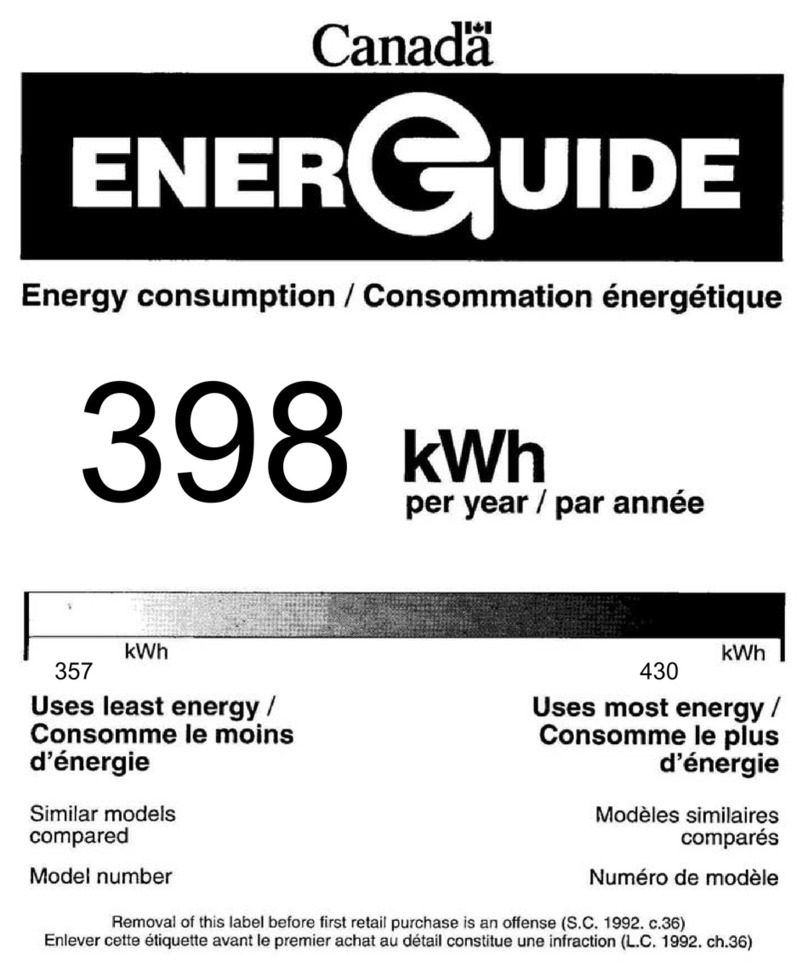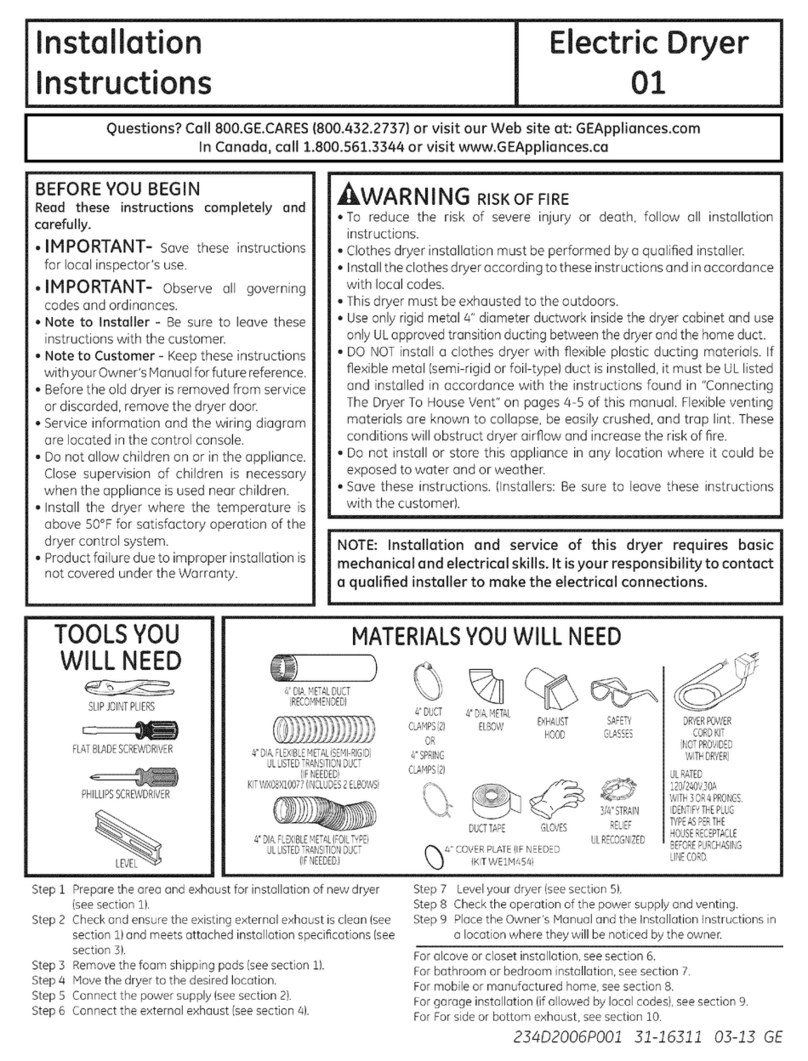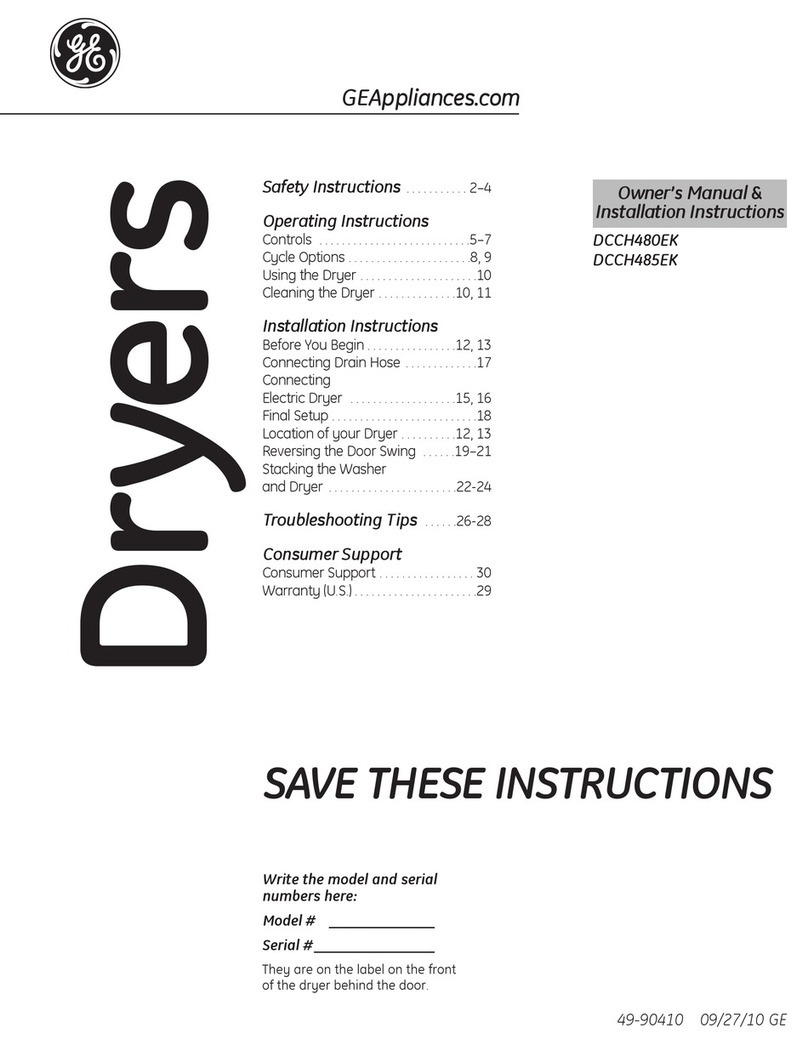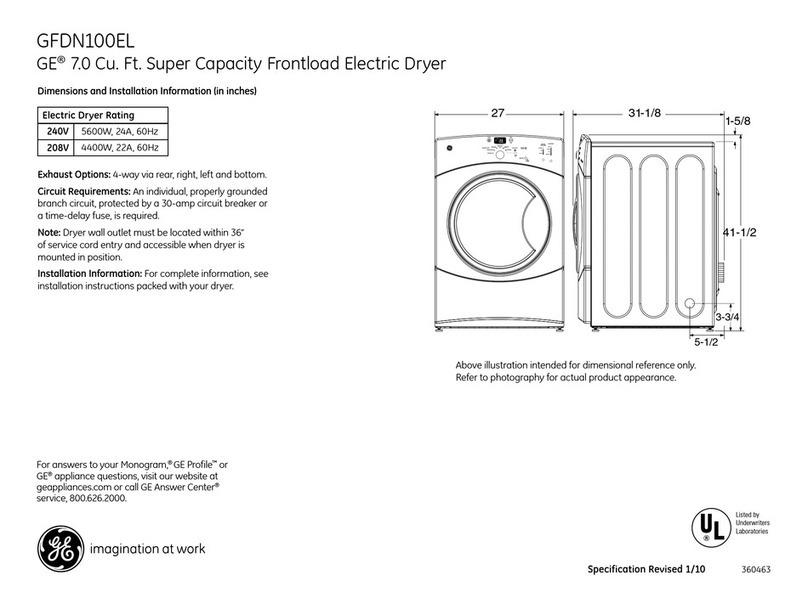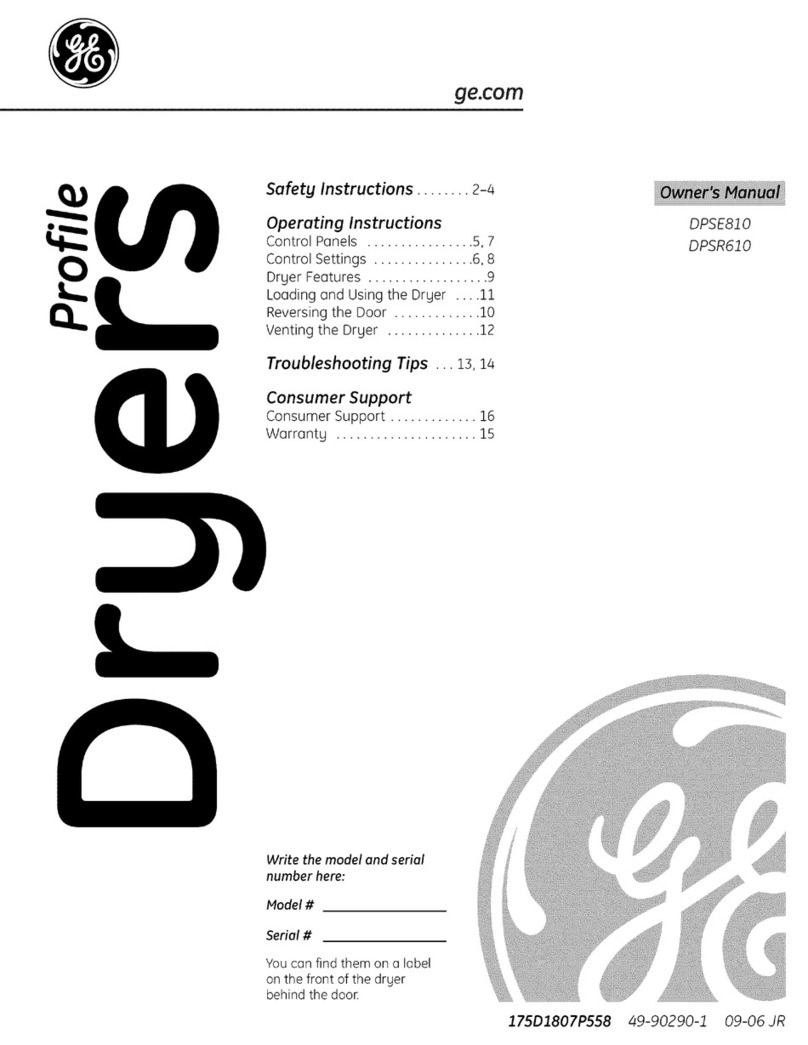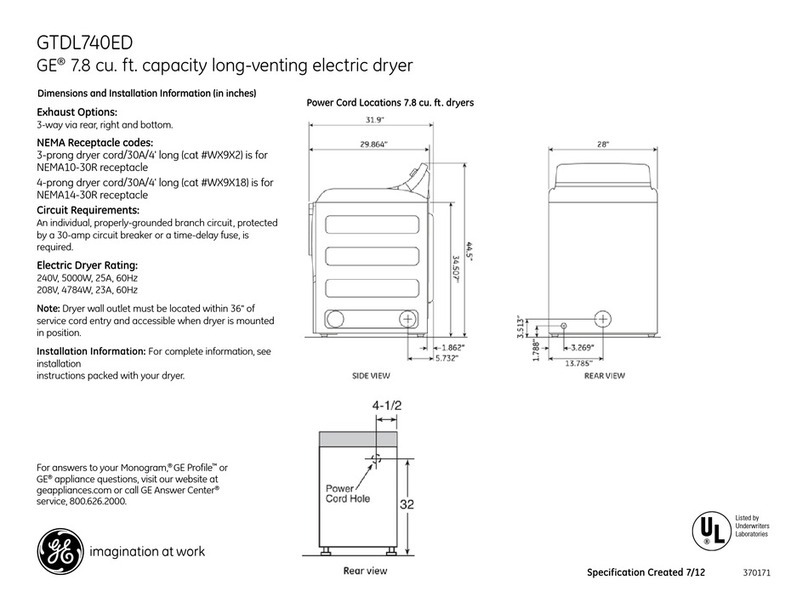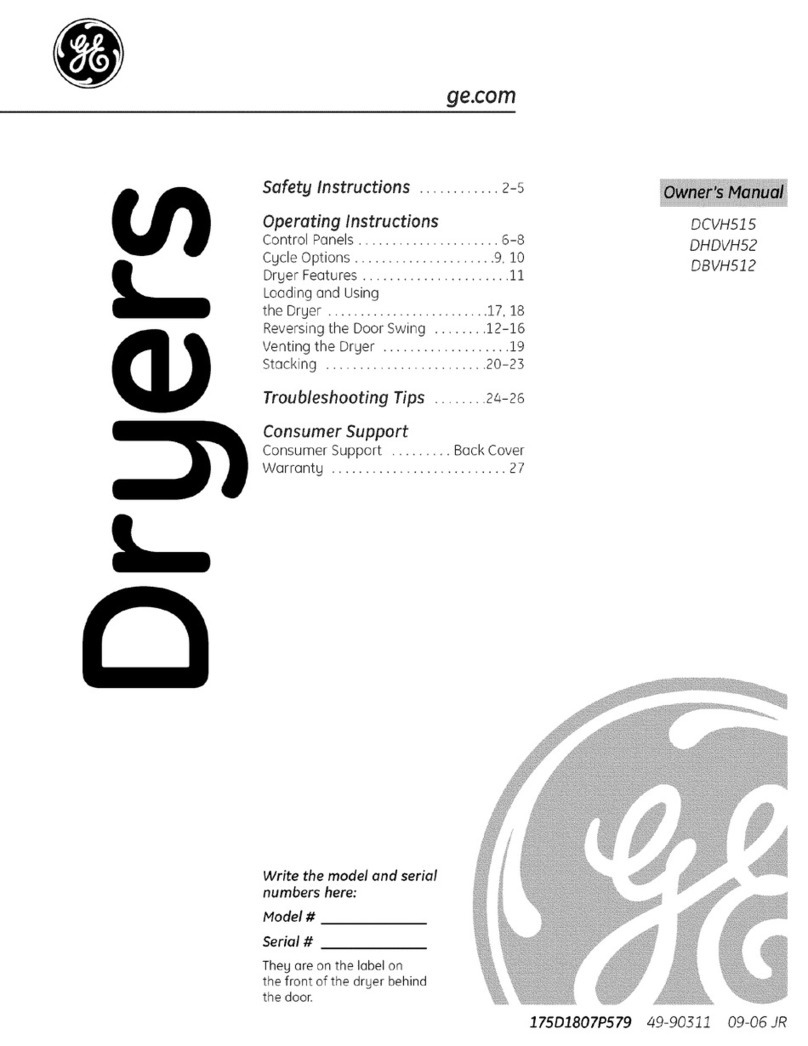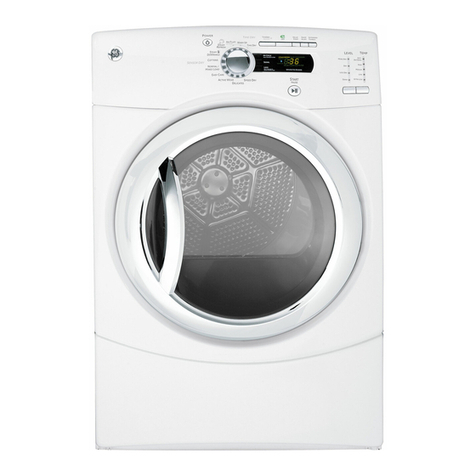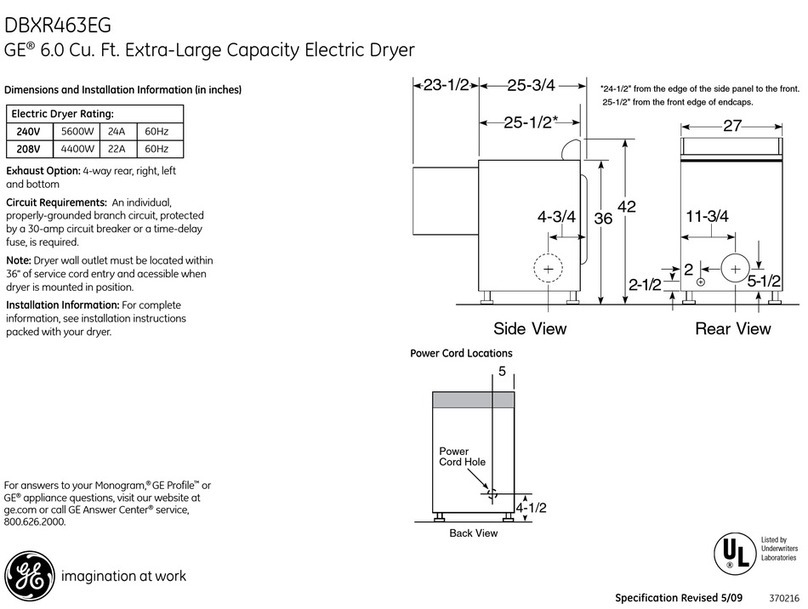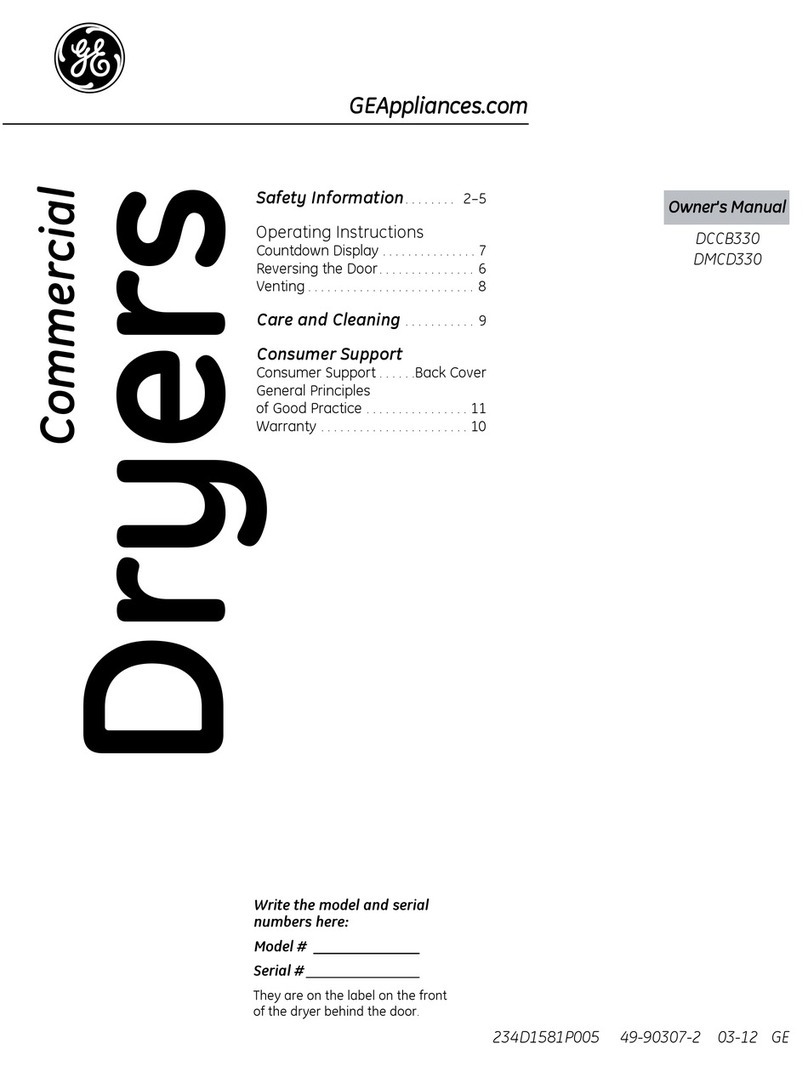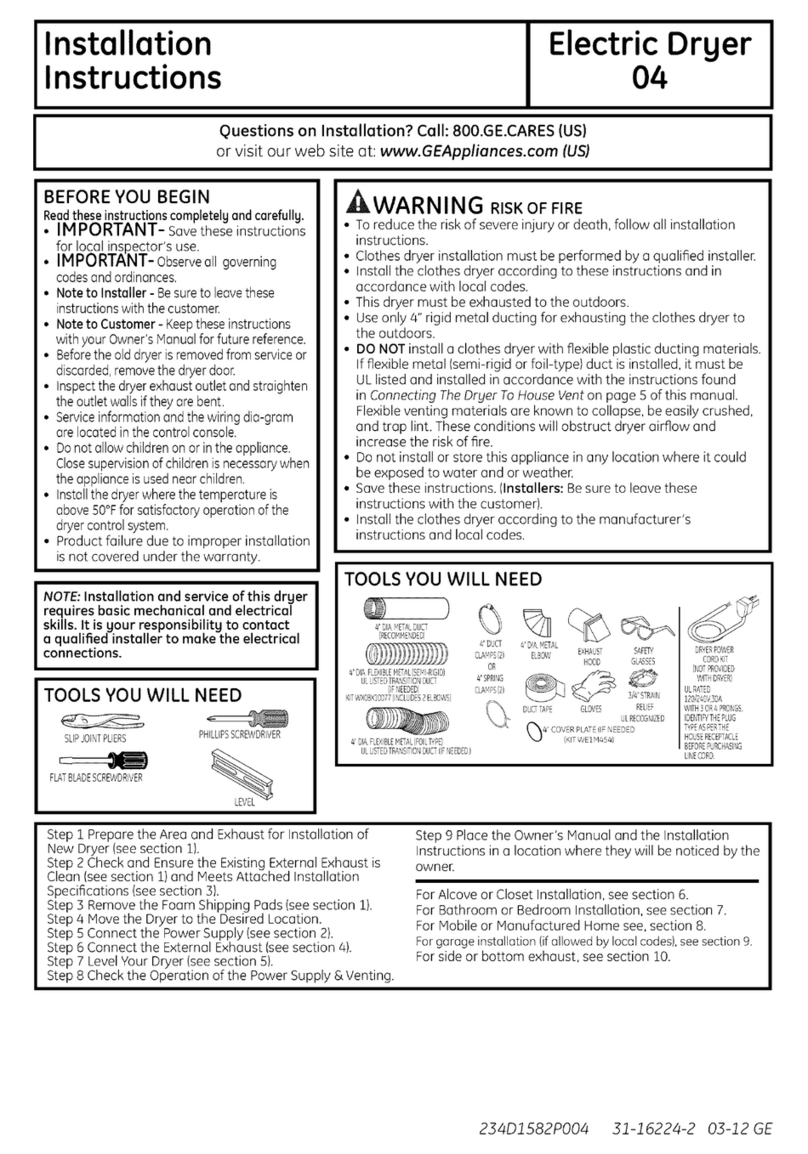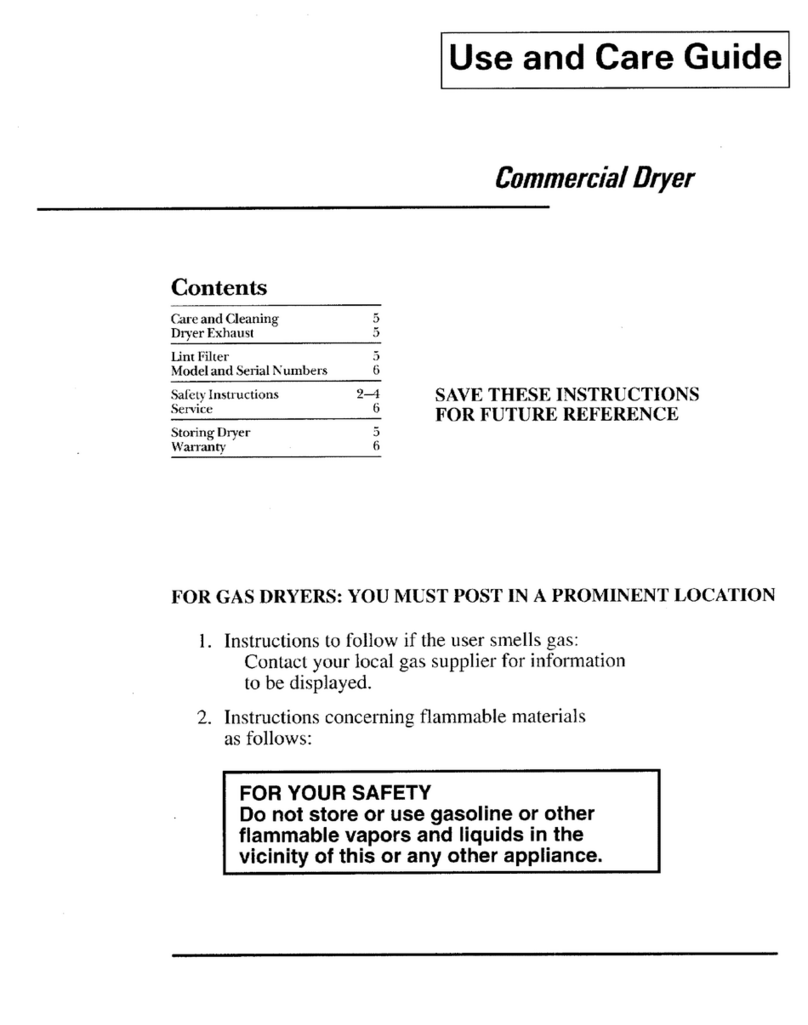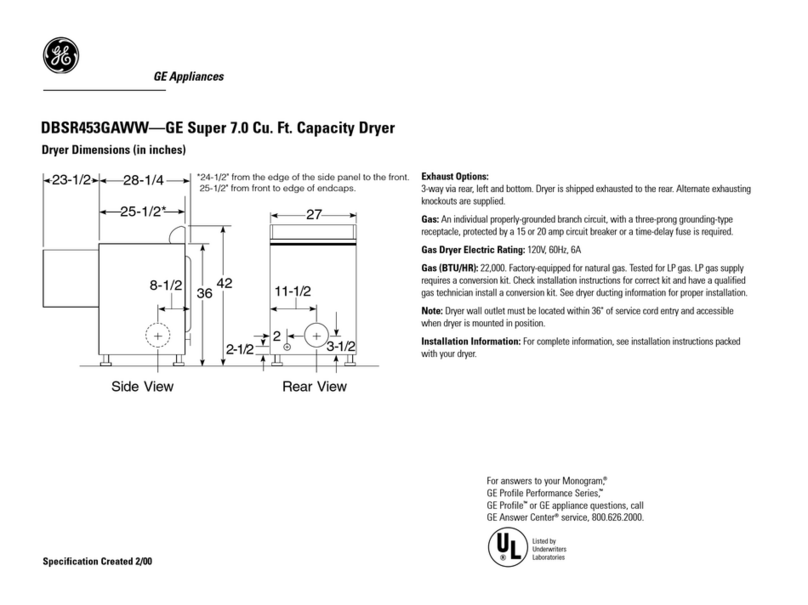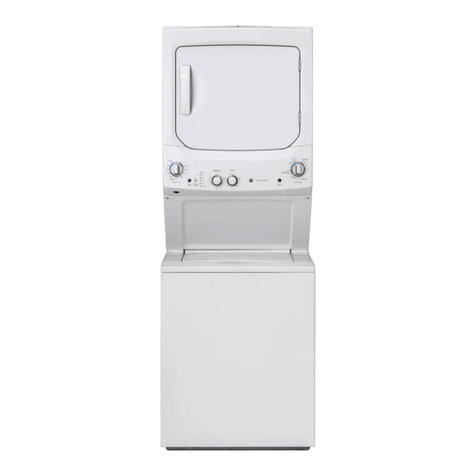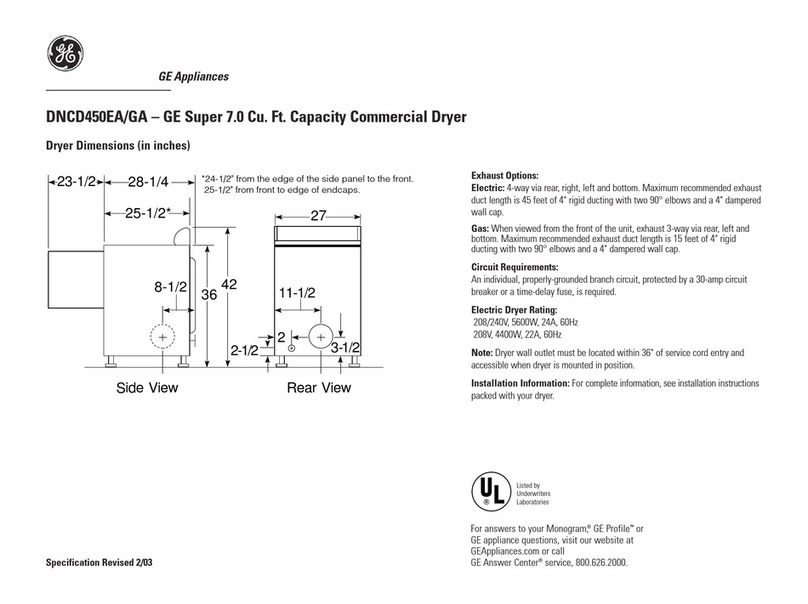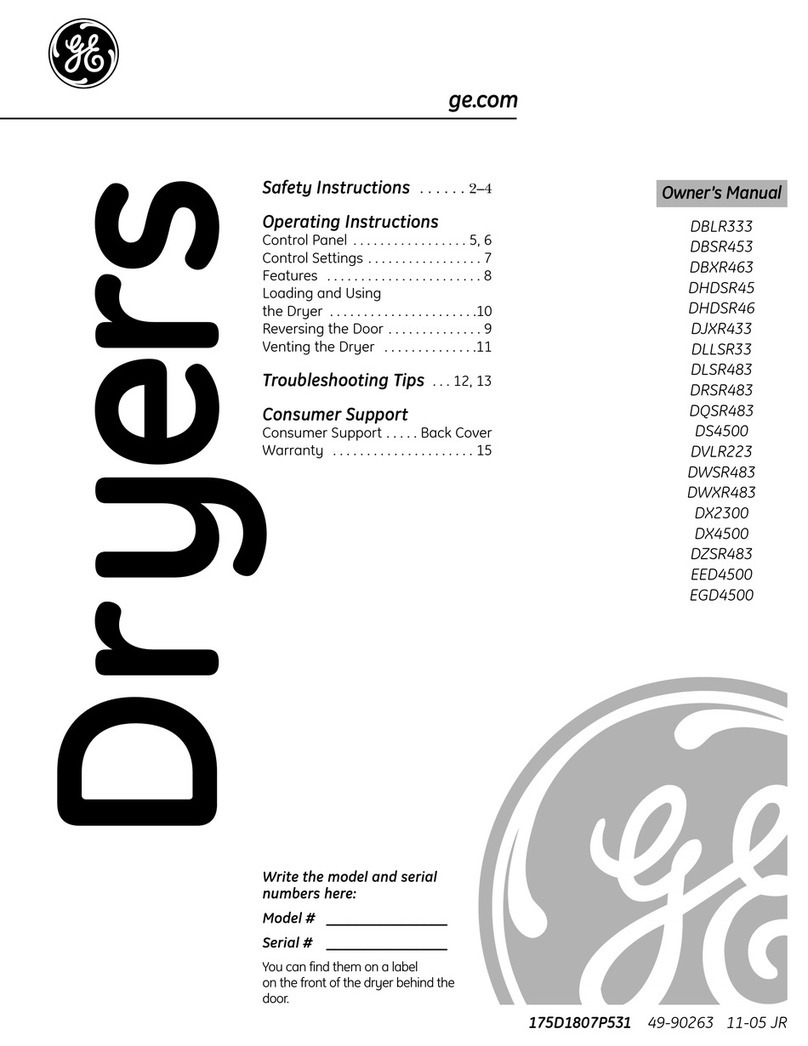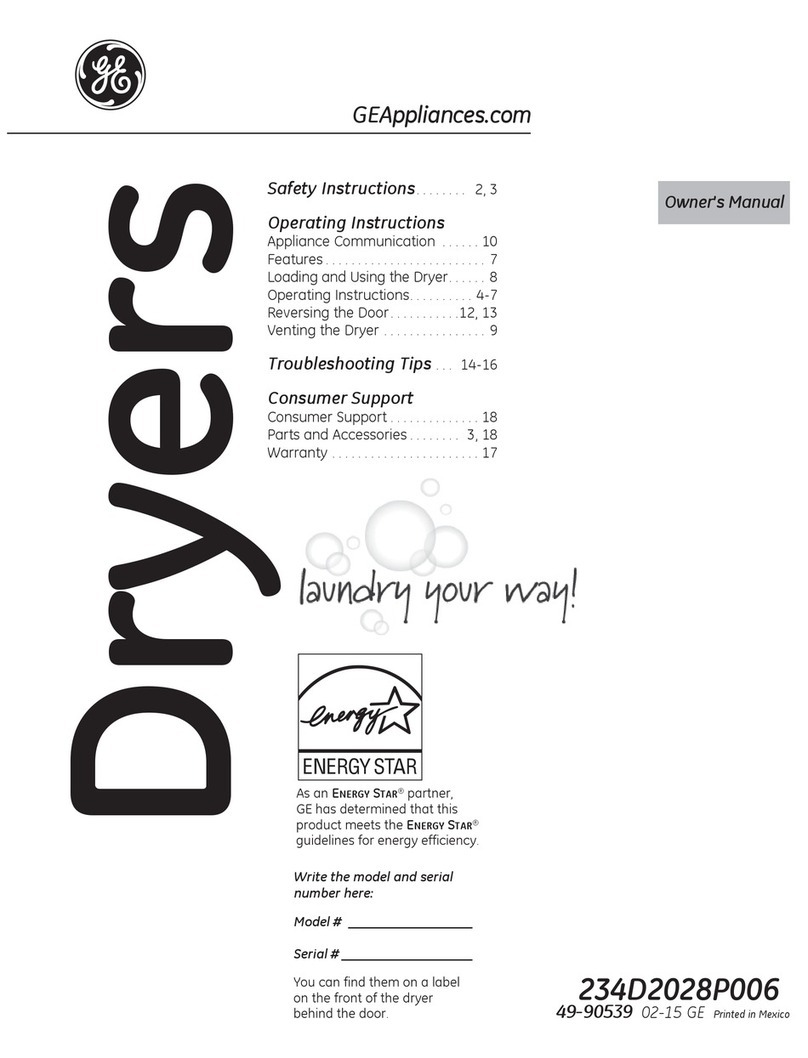
Section 1----- General Information Page 4
Section 2----- Multi-Unit Installation Page 9
THERE IS A NEED FOR
ACCURATE INFORMATION
The variety of floor plans and laundry
locations, coupled with an increasing
number of building codes and
restrictions, indicates a need to advise
planners well in advance of installation
about exhaust requirements and other
pertinent information. This is especially
true in multi-family construction.
Failure to comply with the
manufacturer’s recommendations when
installing a washer and dryer can void
warranty provisions, cause local
authorities to refuse to grant a certificate
of occupancy, or may even result in legal
liability should the user experience
personal or property damage as a result
of the installation.
GOOD PRACTICE IN
EXHAUSTING DRYERS
An inadequate or improperly installed
dryer exhaust system will, at the very
least, result in a loss of drying
performance and an excess energy
consumption.
All dryers must be exhausted to the
outdoors. When the dryer is in operation,
the warm humid air passes thorough the
dryer lint filter where the lint is
collected. Fine particles of lint will pass
through the lint screen and will be
pushed through the exhaust duct to the
outdoors. If outdoors exhausting is not
provided, this lint and moist air will be
exhausted into the room. This condition
could create undesirable effects
including:
•Aggravating allergic conditions
•Sweating of cold water pipes,
windows and walls
•Rusting of metal
•Peeling of paint
•Loosening of wall paper
The indoor exhausting also affects dryer
performance, since it re-circulates highly
humid air from the room. It usually
results in longer drying times.
Index

